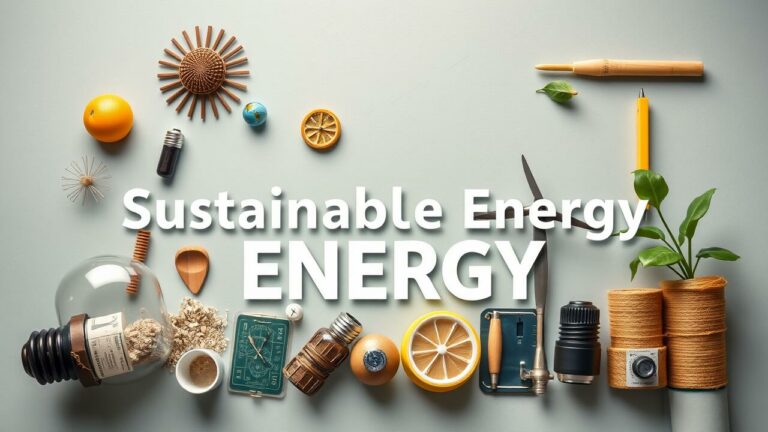Coiled Tubing Drilling
Picture this: a sleek, continuous length of steel tubing whirling into the depths of the earth—this is the essence of coiled tubing drilling. It’s like an agile dancer in a world where efficiency reigns supreme, effortlessly adapting to diverse applications with grace and precision. When time is of the essence—think rapid deployment or diving straight into drilling without the cumbersome hassle of extracting the drill string—this method shines brightest.
Imagine a scenario rife with workover activities: well interventions and enhancements that scream for minimal downtime. Here lies coiled tubing’s forte! Its inherent flexibility becomes a lifeline in complex drilling programs, especially when faced with treacherous terrains. Operators can glide through horizontal stretches as if on air, seamlessly executing repetitive tasks such as cementing and perforating—all while keeping interruptions at bay.
This remarkable capability not only boosts overall well productivity but also trims operational costs like an expert tailor snipping away excess fabric. It’s no wonder that in today’s fast-paced petroleum exploration and production landscape, coiled tubing has emerged as a favored ally—a modern marvel redefining how we think about drilling operations!
Applications and Operational Flexibility
Coiled tubing drilling has burst onto the scene as a remarkably adaptable answer to a plethora of drilling challenges, thanks largely to its knack for boosting efficiency and slashing operational downtime. This innovative technology orchestrates a symphony of tasks—drilling, completing, maintaining wells—all in one seamless flow while deftly sidestepping the pitfalls that often plague traditional drilling techniques. Picture this: its lightweight, nimble design glides through intricate well architectures, making it an ace player in the realms of horizontal and deviated drilling.
But wait! The true genius of coiled tubing drilling unfurls when we consider its operational flexibility—a treasure trove for tackling interventions in pre-existing wells. With equipment that can spring into action at a moment’s notice and operations that pivot with the ever-shifting sands of circumstance, non-productive time shrinks dramatically. And let’s not overlook its superpowers: capable of functioning under sky-high pressures and thriving in extreme environments—it stretches across diverse geographical landscapes and reservoir types like no other! This ensures operators are poised to fine-tune production across an impressive spectrum of scenarios.
Underbalanced Drilling Techniques
Drilling operations often grapple with the intricate dance of pressure differentials, where the wellbore’s internal pressures clash against those lurking in surrounding formations. Enter underbalanced drilling techniques—a clever strategy that keeps the pressure inside the well tantalizingly below formation levels. This crafty approach acts as a barricade, preventing pesky formation fluids from sneaking into the wellbore and wreaking havoc, thereby notably lowering the risk of damaging delicate formations during drilling.
But wait! The perks of underbalanced drilling don’t just stop at improved performance; they stretch far and wide like an unending horizon. In particularly hostile environments—those treacherous zones riddled with highly permeable or fractured rock—traditional methods can quickly spiral into chaos with overwhelming fluid influxes and other headaches. Underbalanced operations emerge as saviors here, slashing down on the necessity for exhaustive post-drilling cleanouts and time-consuming restoration tasks of formations. As a result, operators find themselves basking in reduced downtime and lower operational costs—an enticing combination that underscores how crucial this technology has become in today’s petroleum extraction landscape.
Reducing Formation Damage
Navigating the complexities of formation damage management is absolutely essential in the drilling game, especially when it comes to underbalanced drilling methods. Imagine maintaining reservoir pressure just a notch above formation pressure—a delicate dance that significantly cuts down on fluid invasion while keeping the permeability of the reservoir intact. By deftly employing strategies that fine-tune wellbore pressure throughout drilling operations, companies can bolster formation integrity and safeguard those vital natural pathways for hydrocarbon flow.
But wait, there’s more! Pioneering fluids and cutting-edge technologies step into the fray, playing a crucial role in lessening formation damage woes. Think about specially designed drilling muds—they don’t just stabilize formations; they act as guardians against collapse while simultaneously curbing unwanted infiltration of drilling fluids into reservoir rock. And with advancements in real-time monitoring systems? Operators are equipped with treasure troves of data, enabling them to make swift adjustments to drilling parameters at a moment’s notice. This agile strategy translates directly into enhanced well productivity and ensures that the unique characteristics of the reservoir remain unscathed throughout this intricate process we call drilling.
Artificial Lift Systems
Artificial lift systems are absolutely pivotal in turbocharging the output of oil and gas wells, acting as a lifeline when natural reservoir pressure simply can’t muster enough force to hoist those precious hydrocarbons up from the depths. It’s a fascinating world where various technologies collide—think rod pumps, gas lifts, electric submersible pumps—all deployed depending on the peculiarities of each well and the idiosyncrasies of its reservoir. Each method comes with its own set of perks, allowing operators to handpick the most effective strategy based on factors like fluid makeup, pressure levels, and how deep they’re drilling.
Choosing the right artificial lift system can yield remarkable boosts in production rates and efficiency overall—a game-changer! Thanks to leaps in technological innovation, we’ve seen sophisticated monitoring and control systems emerge that supercharge these lifts’ performance. On top of that, as we ramp up our efforts toward optimizing oil recovery, there’s an urgent need for continuous research and fine-tuning of artificial lifting methods. Customizing these systems to meet the unique hurdles posed by diverse wells isn’t just ideal; it’s essential for maximizing productivity while keeping an eye on economic viability—a key factor dictating whether drilling operations hit or miss their targets!
Technologies for Enhancing Production
Oh, the marvels of modern technology! It’s like watching a symphony where every note is perfectly timed to boost efficiency in extracting hydrocarbons from those deep, mysterious oil reservoirs. Enter advanced artificial lift systems—think electrical submersible pumps and gas lift techniques—that empower operators to keep production rates soaring even when wells start losing their steam. These ingenious contraptions are not just players; they’re pivotal in fine-tuning output across both conventional and unconventional reservoirs, making sure we squeeze every last drop out of our precious resources.
But wait, there’s more! The fusion of cutting-edge monitoring and control technologies adds another layer of brilliance to this intricate dance. With real-time data flowing in like a river, operators can swiftly spot shifts in reservoir dynamics and pivot their extraction tactics on the fly. Imagine deploying smart well technologies paired with constant monitoring systems—it’s like having eyes everywhere! This means companies can crank up their output while trimming down the costs linked with well interventions and maintenance headaches. Such innovations aren’t merely tweaks; they’re game-changers that usher in a new era—a more reliable, sustainable production landscape within the ever-evolving petroleum industry.
Well Completion Technologies
Ah, the intricate dance of well completion technologies—it’s nothing short of a linchpin in the grand tapestry of hydrocarbon extraction. Picture this: perforating, gravel packing, cementing—all these methods converge to forge robust connections between the reservoir’s depths and the bustling production facilities above. The choice of technology isn’t just a mere selection; it’s an elaborate decision influenced by myriad factors like reservoir characteristics, anticipated production rates, and even capricious environmental conditions.
Now, let’s not overlook the allure of properly completed wells; they’re akin to hidden treasures that can unlock higher recovery rates while deftly minimizing environmental footprints and bolstering safety measures during those critical extraction processes.
As we traverse through time, one cannot help but marvel at how these technologies have morphed into something truly revolutionary—think intelligent completion systems intertwined with multilateral well designs! These cutting-edge advancements bestow operators with treasure troves of data and wield greater dominion over various production zones—a game changer that reshapes entire extraction strategies. Armed with sophisticated materials and innovative methodologies, companies are now better equipped to tackle potential pitfalls such as sand production or unwelcome water influx.
This relentless pursuit for maximizing recovery—while steadfastly adhering to rigorous safety protocols and environmental standards—illuminates just how pivotal well completion is within the sprawling oil and gas industry landscape. It’s a world where precision meets perilous challenges head-on!
Strategies for Maximizing Recovery
Maximizing recovery from oil and gas wells—oh, what a complex dance of cutting-edge technologies and finely tuned operational strategies! Picture this: the artful implementation of reservoir management practices that harness the power of real-time data analytics. Yes, indeed! By employing sophisticated reservoir simulation models, we can peek into the future; predicting fluid behavior while fine-tuning production techniques to perfection. Imagine monitoring an array of vital signs—pressure, temperature, fluid characteristics—all in real time! Such vigilance empowers operators to make savvy decisions that turbocharge extraction efficiency.
But wait—there’s more! Enter enhanced oil recovery (EOR) methods, those game-changers capable of catapulting resource extraction to new heights. Techniques like gas injection and thermal recovery or even chemical flooding work their magic by coaxing hydrocarbons trapped within the enigmatic grasp of the reservoir out into the light. And here’s where it gets intriguing: these methods aren’t one-size-fits-all; they adapt seamlessly to match the unique geology and fluid traits specific to each reservoir. Thus unfolds a saga aimed at maximizing every drop of oil and gas.
And as if that weren’t enough intrigue for one narrative, continuous research and development in EOR technologies stand poised on the horizon—a promise unfulfilled yet tantalizingly close—to further elevate our recovery strategies’ efficiency. In this ever-shifting landscape driven by evolving energy demands, who knows what innovations await just around the corner?
| Enhancement Method | Description | Optimal Application |
|---|---|---|
| Gas Injection | Injecting gas (e.g., CO2) into the reservoir to maintain pressure and displace oil. | Large oil reservoirs with gas cap. |
| Thermal Recovery | Introducing heat to reduce oil viscosity and improve flow rates. | Heavy oil reservoirs with high viscosity. |
| Chemical Flooding | Utilizing surfactants or polymers to improve the mobility of trapped oil. | Reservoirs with strong capillary forces. |
| Microbial Enhanced Oil Recovery (MEOR) | Using microorganisms to change fluid properties and improve oil displacement. | Complex reservoirs with residual oil saturation. |
Environmental Considerations in Drilling
The drilling industry is waking up to the stark reality of its environmental footprint, sparking a pressing need for practices that temper its impact. Before any drilling kicks off, intense environmental assessments often take center stage. These evaluations delve deep into the delicate tapestry of ecosystems, pinpointing groundwater sources and wildlife habitats that might bear the brunt of disruption. The integration of cutting-edge technologies designed to minimize surface disturbance and contamination emerges as vital in preserving ecological equilibrium.
Moreover, strides in drilling technology are zeroing in on slashing emissions tied to operations. Swapping out traditional oil-based drilling fluids for their water-based counterparts can dramatically lower the chances of soil and water pollution—an essential shift indeed! On top of that, embracing strategies like waste recycling alongside vigilant emissions monitoring paves the way toward more sustainable industry practices. Opting for environmentally sound choices isn’t merely about ticking compliance boxes; it’s also a savvy move for long-term sustainability and bolstering public perception.
Innovations for Sustainable Practices
In the ever-evolving landscape of drilling technologies, a fascinating shift is taking place—one that places sustainability at the forefront, driven by mounting industry pressures and urgent environmental concerns. Picture this: innovative methods emerging from the shadows, like biodegradable drilling fluids that not only minimize ecological footprints but also supercharge operational efficiency. These remarkable alternatives to traditional chemical concoctions aren’t just about reducing toxicity; they revolutionize cleanup efforts in case of spills, making them easier and less hazardous.
But wait—there’s more! Enter the realm of remote monitoring and automation tools, which are nothing short of game-changers for optimizing drilling operations. Imagine harnessing advanced data analytics paired with real-time surveillance; it’s like having a crystal ball that empowers companies to make swift decisions aimed at slashing energy consumption and curtailing resource waste. And as if that wasn’t enough, these cutting-edge technologies pave the way for better compliance with stringent environmental regulations, fostering an ethos of responsibility in resource extraction while simultaneously elevating project outcomes to new heights.
- Increased use of renewable energy sources in drilling operations.
- Development of smaller, more efficient drilling rigs to reduce land disturbance.
- Implementation of carbon capture and storage technologies to mitigate emissions.
- Design of closed-loop systems to recycle water and other resources used in drilling.
- Collaboration with environmental organizations to promote best practices and innovation.
- Integration of smart sensors for real-time data collection to improve efficiency.
- Adoption of circular economy principles to minimize waste and enhance resource recovery.
Conclusion
Oh, the world of petroleum drilling—what a whirlwind of innovation and transformation! The leaps in technology have reshaped how we extract these precious resources with an efficiency that was once merely a dream. Picture this: coiled tubing and underbalanced drilling techniques twirling through the landscape, giving operators newfound flexibility while keeping formation damage at bay. It’s like watching a dance unfold, both graceful and precise.
But wait, there’s more! Enter artificial lift systems and cutting-edge well completion technologies—these marvels optimize production rates and refine recovery strategies to levels previously thought unattainable. It’s as if the very essence of resource extraction has been reimagined!
Yet, amid this dazzling array of advancements lies a pressing concern—a need for vigilance regarding our planet’s health. The industry must tread carefully; sustainable practices are not just buzzwords but essential lifelines to minimize ecological impacts. It’s all about striking that delicate balance between plucking energy from the earth and nurturing it back.
Looking ahead, the future of petroleum drilling hinges on weaving together high-tech solutions with an unwavering commitment to sustainability. Only then can we responsibly meet today’s energy demands while safeguarding tomorrow’s environment—a task both daunting and exhilarating!






